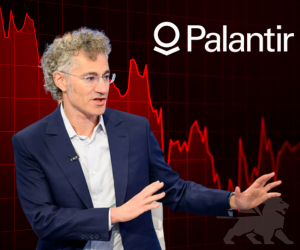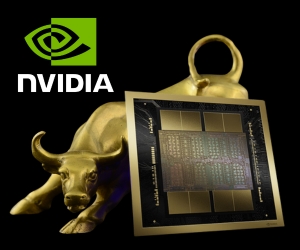PALANTIR STOCK DROPS DESPITE RECORD-BREAKING QUARTER
Palantir Technologies ($PLTR) delivered a blockbuster Q3 2025 earnings report, featuring 63% revenue growth, a 121% surge in U.S. commercial sales, and a record $540 million in free cash flow. Guidance was raised across the board, and the company reaffirmed its dominant position in AI-driven enterprise software. Yet, the share price tumbled over 7% the following day. Why? Ultra-high valuation multiples, broader market weakness, and bearish headlines—including a 13F disclosure from Michael Burry—sparked a “sell-the-news” reaction. While short-term traders ran for cover, long-term investors see the dip below $190 as a potential gift. Palantir remains one of the fastest-growing, most cash-rich tech companies in the world.

Why the share price dropped
Palantir’s Q3 2025 earnings were objectively exceptional, yet its shares slid 7.2% during the following trading session. This counterintuitive reaction is rooted in investor psychology, valuation extremes, and a dose of broader market fear. To the untrained eye, a company reporting 63% top-line growth and 110% EPS gains should rally. However, in financial markets, expectations often matter more than reality.
Priced for perfection
Heading into earnings, Palantir shares were up 156% year-to-date and trading at 229× forward free cash flow. This is nosebleed territory, even for a company in a hyper-growth phase. When a stock is valued at more than 200× forward earnings, even a minor disappointment—or the absence of a major upside surprise—can result in a steep pullback. “Sell the news” is a well-known phenomenon, and Palantir became its latest victim.
AI sector wobble
Palantir’s sell-off didn’t happen in a vacuum. The Nasdaq index dropped 2% on the same day, driven by fears of an AI valuation bubble. Investors began reassessing the astronomical premiums awarded to AI-linked firms. With traders increasingly jittery, high-multiple names like Palantir were easy targets for fast profit-taking. Even a 2% broader pullback can trigger a cascade of algo-driven selling when everyone is crowded on the same trade.
Michael Burry’s bearish bets
Adding fuel to the fire was the release of Michael Burry’s 13F filing, revealing that Scion Asset Management held $912 million in Palantir put options and $187 million in Nvidia puts. While these positions were 45 days old and could be hedges or already closed, headlines screamed “The Big Short 2.0,” prompting a fresh wave of retail panic. The timing couldn’t have been worse: earnings euphoria was still fading, and Burry’s bearish bets hit just as sentiment was turning.
Valuation stretched at 229× FCF
AI bubble fears hit tech broadly
Burry's put options spooked retail traders
Technical selling and algo trades accelerated the move
Lack of an upside “shock” triggered profit-taking
This sell-off says more about market dynamics than Palantir's fundamentals. The company executed well—perhaps too well for its own short-term good.
Palantir’s business is on fire
Strip away the noise, and Palantir’s Q3 2025 numbers read like a Silicon Valley fairy tale. Revenue came in at $1.181 billion, beating analyst estimates by over $90 million. Adjusted earnings per share hit $0.21, up 110% from the previous year. GAAP profit soared 231% to $476 million. These are not small beats—these are blowout results.
Commercial growth leads the charge
U.S. commercial revenue jumped 121%, making it the fastest-growing segment in Palantir’s portfolio. This surge shows that the company is no longer just a government contractor—it’s a full-scale enterprise software juggernaut. Companies across industries are rapidly adopting its Artificial Intelligence Platform (AIP) to solve real-world problems like supply chain disruptions, predictive maintenance, and fraud detection.
Cash-rich and debt-free
Palantir generated $540 million in free cash flow during the quarter, up 46% year-over-year. Its balance sheet now holds $6.4 billion in cash and zero debt—a rare feat in a sector where many peers are still burning capital. This gives Palantir optionality: it can invest, acquire, or weather downturns without breaking a sweat.
Guidance raised across the board
Management raised guidance yet again. Q4 revenue is expected to hit $1.33 billion, compared to the prior consensus of $1.19 billion. Full-year 2025 revenue is now forecasted between $4.396 and $4.400 billion, representing 53% year-over-year growth. Projected free cash flow for 2025 is $1.9–2.1 billion. These numbers reinforce that Palantir’s growth is not only real—it’s accelerating.
Revenue: $1.181B (+63%)
Adj. EPS: $0.21 (+110%)
Free cash flow: $540M (+46%)
U.S. commercial growth: +121%
Cash: $6.4B, Debt: $0
Palantir’s fundamentals are not just strong—they’re best-in-class among enterprise software firms. Any dip disconnected from these metrics is a market inefficiency, not a business flaw.
A long-term opportunity in plain sight
If you believe in the compounding adoption of artificial intelligence and its role in transforming how businesses operate, Palantir remains a standout. The company has transitioned from a niche government tool to a foundational AI infrastructure provider for the enterprise sector. Despite the short-term sell-off, long-term investors may view this dip as a compelling re-entry point.
Buy-the-dip pattern repeating
Every time Palantir has dipped below $190 in 2025, buyers have stepped in. The stock hit a high of $207 just days before the sell-off, suggesting that this move could simply be a healthy valuation reset. If historical patterns hold, shares could base and grind higher from current levels as earnings momentum reasserts itself.
Execution outweighs volatility
Yes, the stock is volatile. But it’s volatile in the way Tesla or Nvidia was in its early scaling years. The company is growing fast, generating real cash, and winning large-scale enterprise contracts. Over time, execution trumps sentiment, and companies with consistent financial performance tend to re-rate higher—often dramatically.
The bigger AI picture
Artificial intelligence isn’t a 2025 trend—it’s a 2020s megacycle. We are likely still in the early innings of enterprise AI adoption. Palantir’s AIP platform is uniquely positioned to dominate this space. From healthcare to logistics to defence, its use cases are multiplying rapidly. As more CIOs prioritise AI in their digital transformation roadmaps, Palantir stands to benefit exponentially.
Stock pulled back after 156% YTD gain
Valuation reset may be healthy
Execution remains flawless
AI tailwinds continue to strengthen
Cash-rich foundation enables long-term compounding
Short-term volatility often masks long-term value. For investors who believe in AI’s decade-long runway, Palantir’s current dip could be more of an opportunity than a warning sign.








